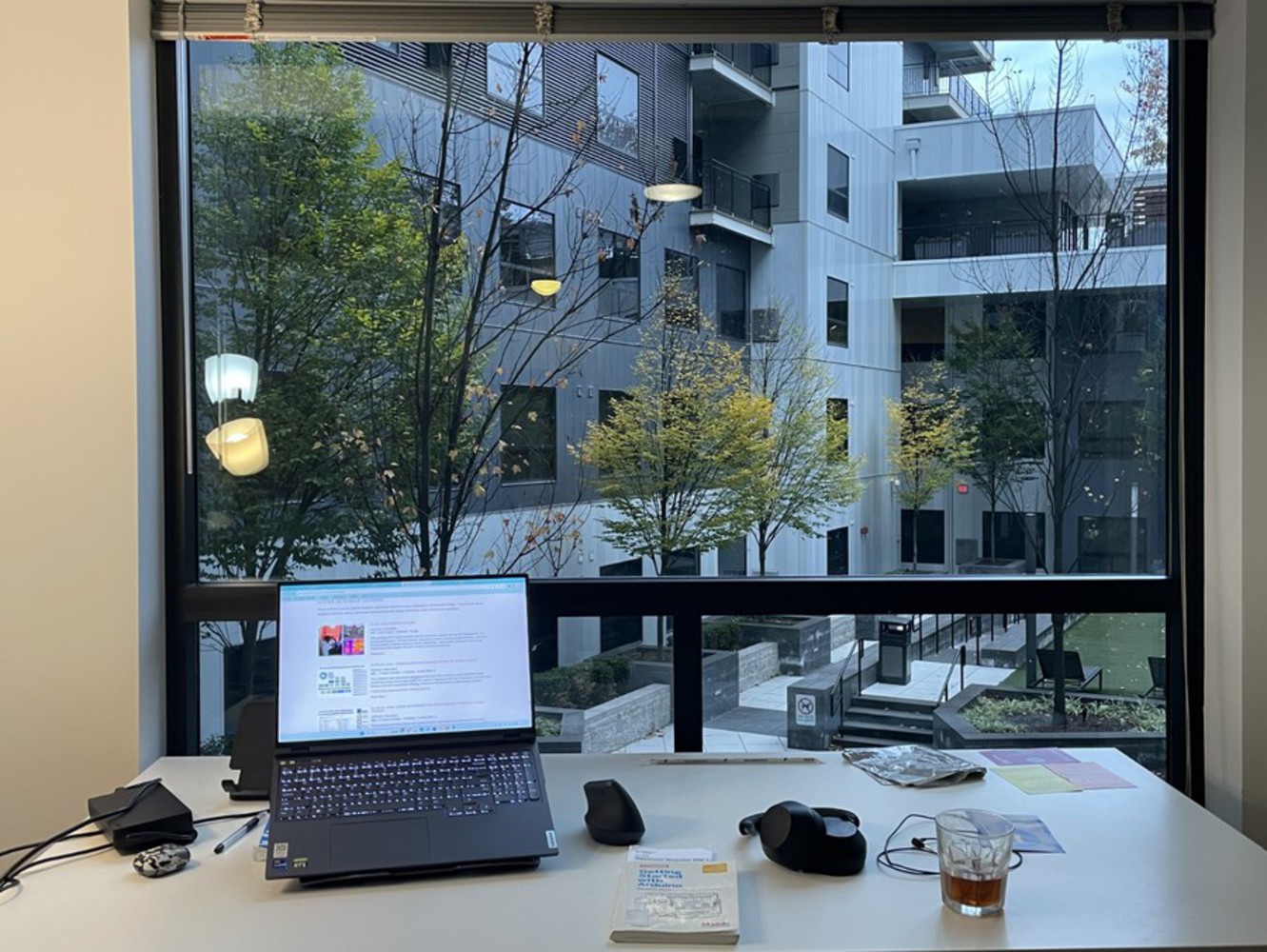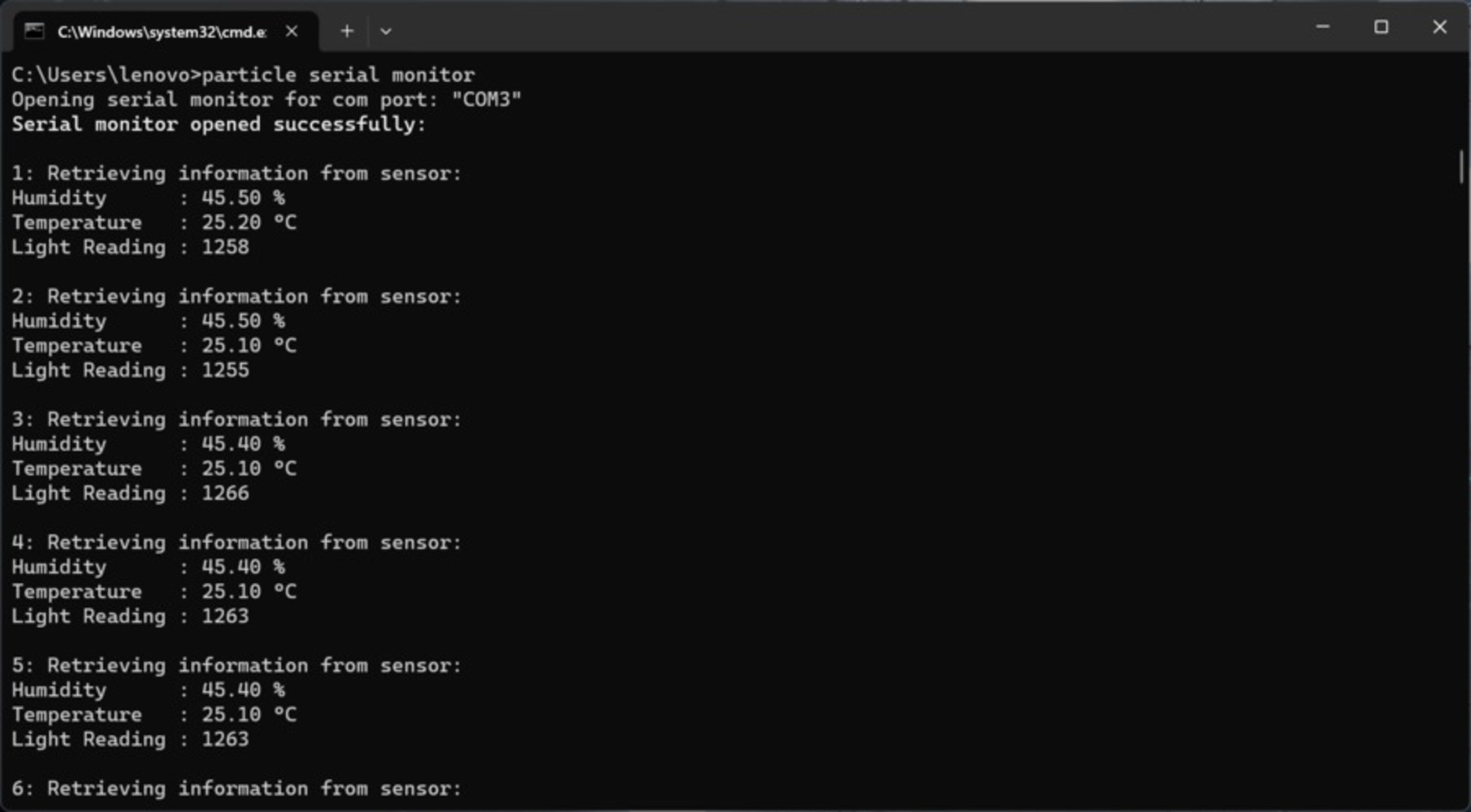Process
First I built the test version to try on the DHT 22 sensor using the library example. The example in Adafruit_DHT failed to work on Argon but the one by Piettetech_DHT worked. I doubted that it might be caused by different configuration and uses of the pins and asked Zhenfang about this question.
He told me that he looked into the header files and main classes of Adafruit_DHT and Adafruit_DHT_Partice, and found that they should be used for different boards, the class member functions initialize the pin differently. (Thanks for the help by Zhenfang)
Next, I use the test to figure out the existing conditions of the workplace and using particle serial monitor to check the status. As can be seen in the CLI, indoor temperature is roughly 25 Celsius and humidity is around 45%. While the light reading is not using a standard unit of measurement, I tested the reading with the light and curtain off to simulate the conditions in which we are not working. It is a reading of photoresistor around 1250. Later I tested with them on and the reading is around or larger than 2500.


